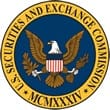Form ADV Part 1
Recently, I wrote about the SEC’s adoption of amendments to the Form ADV Part 1 as of August 25, 2016. Then, I wrote a second blog reminding registered investment advisors of those changes and to notify you that the changes to the Form ADV Part 1 go into effect as of October 1, 2017. Originally, that meant if you needed to amend your Form ADV Part 1 for any reason on or after October 1, 2017, investment advisors would need to provide responses to the new questions applicable to your firm’s business model.
Today, the SEC released an information update with additional guidance on responding to these ‘new’ questions. Click here for the Information Update.
- The SEC’s guidance is if you need to file an other-than-annual-amendment to make a change to your Form ADV Part 1 on or after October 1, 2017, but before your next annual amendment, and you do not have the additional information needed to respond to the ‘new’ questions in Item 5, and Schedule D sections, you can simply answer with “0” and provide a brief explanation in the Miscellaneous section of the Schedule D that a placeholder value of “0” was entered.
This new guidance helps to provide additional time to gather the data needed to comply with the new questions.
Form ADV Part 2 Disclosure Brochure
Registered Investment Advisors are required to prepare and maintain a plain English Form ADV Part 2 Disclosure Brochure that properly describes their business model and how the firm operates. Unfortunately, some registered investment advisors, once the Form ADV Part 2 Disclosure Brochure is initially prepared, that document is not reviewed again until the regulators come knocking on the door for an exam.
Be proactive! Review your Form ADV Part 2 Disclosure Brochure at a minimum to confirm the following:
- Item 4 Advisory Business, confirm that the description of how your firm operates is still current;
- Item 5 Fees and Compensation, confirm that the information in this section actually explains how your firm will charge for the services offered, including what the advisory firm’s actual fees are for the described services;
- Item 9, Disciplinary Information, confirm that any new client issues, regulatory issues, arbitrations, court actions, etc. are properly disclosed within this item;
- Item 10, Other Financial Industry Activities and Affiliations, make sure that all of your firm’s affiliations and those of your Investment Advisor Representatives are included within this section along with any conflicts of interest;
- Item 15 Custody, carefully review this section of your Disclosure Brochure to confirm you have included any and all instances where your firm may have custody of your client’s funds or securities. For example, if an advisor is named as a Trustee on a trust account for a client, this will be deemed as custody.
To be clear, a complete review of your Form ADV Part 2 Disclosure Brochure is a must, every year. Reviewing this document when you have the time versus when you have a regulator in your office is never a good option. Review your document today!
Form ADV
This week, the Securities and Exchange Commission (SEC) sent a 60-day notice email to federally registered investment advisors about the new questions on the Form ADV. I have received inquiries that I thought worthy of addressing here:
- The new questions on the Form ADV apply to both state and federally registered investment advisors.
- The new questions will appear on October 1, 2017
- Registered Investment Advisors will need to respond to the new questions if you are amending your Form ADV for any reason, on or after October 1, 2017.
- Investment Advisors need to review these new questions now, as the additional information about your ‘clients’ may take time to gather if you do not have the information in-house. You may need to reach out to your custodian for the information in the format required.
Click Here is a summary of the amendments to the Form ADV
Click Here for the Frequently asked Questions compiled by the SEC
RIA Compliance Procedures
Recently, the state of Texas securities regulators fined and reprimanded a Chicago based securities dealer for violating its RIA compliance procedures when it failed to verify three signatures on a wire distribution request with the client before transferring money from the client’s account.
RIA Compliance Procedures
In three separate transactions, the chief compliance officer wired a total of $91,560 from an Individual Retirement Account (IRA) of a Texas client of the firm, who had not made any requests for funds to be transferred from his account.
The emails had several warning signals including in the subject line of the first email requesting a transfer of funds, it included the word [SPAM]. The second email asked that the cash balance be emailed. And, finally, the client was unrelated to the recipients of the wire transfers and had never wired money to them before.
Cybersecurity
The requests were sent from the client’s email account that had been compromised. According to the Securities Commissioner in Texas, electronic mail is the most likely way for a client’s account with a securities firm to be compromised.
Cyber-fraud is on the rise and state registered investment advisors need to establish up to date RIA compliance procedures to assess the risks of access to their client’s information.
Financial Crimes Enforcement Network
Last year, the Financial Crimes Enforcement Network, a division of the Department of the Treasury issued an advisory to financial institutions to provide guidance on instituting procedures to help stop fraudulent transfers of customer funds.
Before accepting wiring instructions from a ‘client’, call the client first for confirmation! Make this a part of your RIA compliance Procedures.
Investment Advisor policy procedures
Recently, I received a white paper titled An Adviser’s Guide to Cybersecurity that offers great tips for investment advisor policy procedures. This white paper is prepared by Cadaret, Grant & Co., Inc. in conjunction with InvestmentNews Research.
The white paper offers information on the four cybercrime trends that all firms face, that is:
- Continuing use of ransomware
- Identity theft
- More sophisticated phishing
- Wider criminal use of data
And, it provides important steps for investment advisors to consider as you assess your advisory firm’s policy procedures in the area of cybersecurity for vulnerability and protection of your client’s information. The white paper also discusses the appropriate steps to identify where issues may reside within your investment advisory firm and what to consider when preparing a comprehensive plan.
For a copy of An Adviser’s Guide to Cybersecurity, click here.
Form ADV Part 1
On August 25, 2016, the SEC adopted amendments to the Form ADV Part 1. The purpose of this Blog is to remind registered investment advisors of those changes and to notify you that the changes to the Form ADV Part 1 go into effect as of October 1, 2017. That means, if you need to amend your Form ADV Part 1 for any reason on or after October 1, 2017, investment advisors will need to provide responses to the new questions applicable to your firm’s business model.
Who do the changes to the Form ADV Part 1 apply to and what is now required?
The most significant changes to the Form ADV Part 1 relate to reporting your Regulatory Assets Under Management for your investment advisory firm’s separately managed accounts.
A good portion of the amendments are made within Item 5, Information About Your Clients, and the supporting Schedules, on the Form ADV Part 1. These new questions are collecting more specific information about your firm’s separately managed accounts. Although the SEC does not specifically define separately managed accounts here is their guidance directly from their adopting release:
“For purposes of reporting on Form ADV, we consider advisory accounts other than those that are pooled investment vehicles (i.e., registered investment companies, business development companies and pooled investment vehicles that are not registered (including, but not limited to, private funds)) to be separately managed accounts.”
Therefore, all of your client accounts, outside of pooled investment vehicles, are considered to be a separately managed account according to the SEC and for purposes of reporting on the new questions on Form ADV Part 1.
What do registered investment advisors need to do?
Investment Advisors will still need to report regulatory assets under management as of December 31, 2017 broken out between discretionary vs non-discretionary assets as you have been reporting in past year annual updating amendment filings.
To prepare for this new change on the Form ADV Part 1 there will be new client information that will now need to be reported.
- For example, as of October 1, 2017, you will now need to also include the actual (not a range) number of clients you have, broken out by type of client (Individuals, High Net Worth, Individuals, Banking or thrift institutions, Investment Companies, Business development companies, Pooled Investment vehicles, Pension and profit sharing plans, charitable organizations, state or municipal government entities, other investment advisors, insurance companies, sovereign wealth funds and foreign official institutions, corporations or other businesses not listed above, other) and report the aggregate dollar amount of your regulatory assets under management by each client group.
- Further, investment advisors with separately managed account business, if you engage in borrowing transactions on behalf of any of the separately managed account clients; or if you engage in derivative transactions on behalf of any of your separately managed account clients, there will be additional information that will need to be reported.
Included here is a paper copy of the Form ADV Part 1, marked up, to include the ‘new’ questions so you may see these questions in context with the Form.
Click Here for the paper copy of the Form ADV Part 1 with the ‘new’ questions.
Generally, the other new questions on the Form ADV Part 1 center around the following topics:
- New Umbrella Registration for multiple (relying) advisors who advise more than one private fund;
- Including registered investment advisors largest twenty-five offices where you conduct investment advisory business;
- Include all of your websites or accounts on publicly available social media platforms (including, but not limited to, Twitter, Facebook and LinkedIn). This means list all of the firm’s accounts on publicly available social media platforms, not personal accounts;
- New questions about Outsourced Chief Compliance Officers;
- New Wrap Fee Program Information.
These new questions will only apply to your investment advisory firm based upon your business model. In other words, for example, if you do not offer a wrap fee program, then the new questions will not apply.
The purpose of this blog post is to remind you to be proactive! Don’t wait until October to determine how you will respond to these new questions. Review the attached ‘mark-up’ of the Form ADV Part 1 to begin thinking about how you will be able to gather this new required information.
What is the due date for responses to the ‘new’ Form ADV Part 1 questions?
To reiterate, the Form ADV Part 1 will have new questions that will need to be answered (as applicable) as of October 1, 2017. If registered investment advisors make no changes to your Form ADV Part 1 between October 1, 2017 and the end of this year (2017), then you will see these new questions for the first time with your annual updating amendment filing, first quarter, 2018.
Ongoing RIA Compliance Requirements
Yesterday, the Department of Labor (“DOL”) announced a 60-day extension of the applicability date of the Fiduciary Rule and related exemptions, including the Best Interest Contract Exemption. This announcement impacts ongoing RIA compliance requirements for registered investment advisors.
Under the terms of the extension, investment advisors to retirement investors are considered fiduciaries and have an obligation to give advice that adheres to “impartial conduct standards” beginning on June 9 rather than on April 10, 2017, as originally scheduled. The impartial conduct standards require advisors to adhere to a best interest standard when making investment recommendations, charge no more than reasonable compensation for their services and refrain from making misleading statements.
During the period between now and January 1, 2018 when all the exemptions’ conditions are scheduled to become fully applicable, the DOL will review the rule and decide whether to make or propose further changes to the Fiduciary Rule or associated exemptions. In the absence of further action by the DOL, the extension announced yesterday does not affect the requirement to enter into a Best Interest Contract or other requirements that are currently scheduled for January 1, 2018.
In sum, the fiduciary definition outlined in the Fiduciary Rule as published on April 8, 2016 and impartial conduct standards are applicable on June 9 while compliance with the remaining conditions in the exemptions, such as requirements to make specific written disclosures and representations of fiduciary compliance in communications with investors, is not required until January 1, 2018.
Need assistance understanding this rule extension and how it may impact your investment advisory firm’s ongoing RIA compliance requirements? Let Registered Advisor Services help. Contact us today!
Investment Advisor Compliance
Recently, the Securities and Exchange Commission (SEC) published its 2017 Investment Advisor Compliance Outreach Programs for Investment Companies and Investment Advisors. Each regional seminar will include an overview of the SEC’s Office of Compliance Inspections and Examinations (OCIE) 2017 exam priorities. The locations and times are as follows:
- Portland, Oregon – May 17 (8:30 a.m. to 12:30 p.m.): Key examination program initiatives, examination procedures and selection process, and recent trends and issues in the Enforcement Division’s Asset Management Unit.
- New York – June 7 (12:30 p.m. to 5:00 p.m.): Staff examinations and observations, and topics of interest to advisers to private funds.
- Boston – June 13 (8:30 a.m. to 1:00 p.m.): Key examination program initiatives, typical examination process, and topics of interest to advisers to private funds.
- Chicago – June 13 (8:00 a.m. to 4:30 p.m.): Key examination program initiatives, examination procedures and selection process, common examination deficiencies, data analytics, and several hot topic panels generally applicable to both small and large firms. This seminar will be webcast.
To register for one of these important seminars, click here!
Investment Advisor policies and procedures
Yesterday, the Office of Compliance Inspections and Examinations (“OCIE”) published a list of five compliance topics most frequently identified in deficiency letters sent to registered investment advisors, including deficiencies with investment advisor policies and procedures.
The five most frequent compliance issues that continue to come up in exams are as follows:
- Investment Advisor policies and procedures-SEC Rule 206(4)-7 requires investment advisors to put in place compliance manuals that are reasonably tailored to the advisor’s business practices; appoint a Chief Compliance Officer to have oversight of the policy and procedures and to perform on at least an annual basis a review of those policy and procedures.
The compliance issues found are that investment advisors are not tailoring their compliance manual to their business practice; annual reviews are not being performed; compliance manuals are not kept current; and, the investment advisor is not following the policies and procedures outlined within the Compliance Manual.
- Regulatory Filings are not timely filed or accurately completed.
Registered investment advisors are required to file their Annual Amendment filing, within 90 days of their fiscal year end; or more frequently if a change has occurred within the firm’s business model. Rule 204(b)-1 of the Advisers Act requires investment advisors to one or more private funds with private fund assets of at least $150 million to file a Form PF; and, Rule 503 under Regulation D of the Securities Act of 1933 requires issues to file Form D on behalf of their private fund clients. The compliance issue found is that investment advisors are not timely filing these reports; and/or the information contained within the filing is inaccurate.
- Custody Rule. Registered investment advisors that have custody of client cash or securities must comply with Custody Rule 206(4)-2 under the Advisers Act.
Examples of exam deficiencies with respect to the Custody Rule by investment advisors are that advisors did not recognize that they may have custody due to online access to client accounts; the surprise annual exam required by investment advisors with custody, did not meet the requirements of the Custody Rule; and, investment advisors did not recognize that they had custody as a result of certain authority over client accounts.
- Code of Ethics Rule. Registered investment advisors are required under Rule 204A-1 of the Advisers Act to adopt and maintain a Code of Ethics that among other requirements, must establishes a standard of business conduct for all of the advisors supervised persons; the Code requires the advisor’s ‘access persons’ to report their personal securities transactions and holdings to the Chief Compliance Officer of the firm; and, requires those ‘access persons’ to obtain the advisors pre-approval before investment in initial public offerings or private placements.
OCIE found investment advisors had not identified their access persons; the Code of Ethics was missing required information under the rule; access persons had not submitted their transactions and holdings reports on a timely basis; and, investment advisors did not have a description of the Code of Ethics in their Form ADVs.
- Books and Records Rule. Registered investment advisors are required to make and keep certain books and records relating to their investment advisory business as outlined in Rule 204-2 of the Advisers Act.
The exam deficiencies found where that investment advisors did not maintain all the required records; the books and records were not up to date or were inaccurate; and, in some cases the investment advisor had inconsistent recordkeeping.
All of the above exam deficiencies are preventable. As you review the information provided above and within the February 7, 2017 OCIE Risk Alert, review your own investment advisory practices, particularly in the area of investment advisor policies and procedures, to confirm that when the SEC examines your firm, none of these items will be an issue.
Registered Advisor Services can assist with more information about how to handle your RIA compliance requirements. Contact the firm today!
Investment Compliance Services
Happy New Year! As we start the New Year, investment compliance services should be at the top of registered investment advisors “to do” list! The start of each year brings about the following investment advisor ongoing compliance requirements that need attention:
- Confirm that your renewal fees for 2017 have all been paid and that you have downloaded from FINRA a copy of your Paid Renewal Statement to confirm payment.
- Begin gathering the information for your Annual Amendment filing due within 90 days of your investment advisory firm’s fiscal year end.
- Begin your review of your Form ADV Part 2A Brochure and Form ADV Part 2B Brochure Supplement to be certain the advisory services you provide are still properly disclosed within your compliance documents.
- Within 120 days of your investment advisor firm’s fiscal year end, be certain you provide a copy of your Form ADV Part 2A Brochure and 2B Brochure Supplement to your clients and document that you have done so.
- State registered investment advisors may be required to submit to their state regulator financial statements by March 31, 2017. Confirm with your state regulator if this is a requirement for your firm to meet your investment compliance services.
- Review your firm’s Privacy Policy to confirm no compliance changes are needed.
- Complete FINRA’s certification to confirm who has access to the Investment Advisor Registration Depository (IARD) system on behalf of your investment advisor firm.
- Review Form U4 to confirm that the responses to all the questions are still current and up to date, especially the Outside Business Activities.
- Exempt Reporting Advisors are also required to file an Annual Amendment filing within 90 days of the firm’s fiscal year end. Begin your review of this document and gathering of your firm’s Regulatory Assets Under Management, Number of Accounts, Type of Clients, etc.
- Rule 206(4)-7 under the Investment Advisers Act of 1940 requires registered investment advisors to adopt and implement written policies and procedures reasonably designed to prevent violations of the Advisers Act and the rules thereunder by the Adviser and its supervised persons. Do a review of your written policies and procedures, and document your review, to confirm that the investment compliance services are properly described.
- Confirm that your supervised persons have signed and certified to your advisory firm’s Code of Ethics. Confirm that you have gathered the necessary brokerage statements from your supervised persons, quarterly and annually, to meet the investment compliance services requirement review procedures within the Code of Ethics.
- Most registered investment advisors to private funds are required to file Form PF on either a quarterly or annual basis. Be certain you have determined your filing requirement and deadline to properly meet this important deadline.
This bullet point list is some of the more immediate investment compliance services that registered investment advisor firms need to attend to during the first quarter of 2017. Firms needing assistance with investment compliance services, contact Registered Advisor Services today for more information about how we may partner together to meet your firm’s goals.






